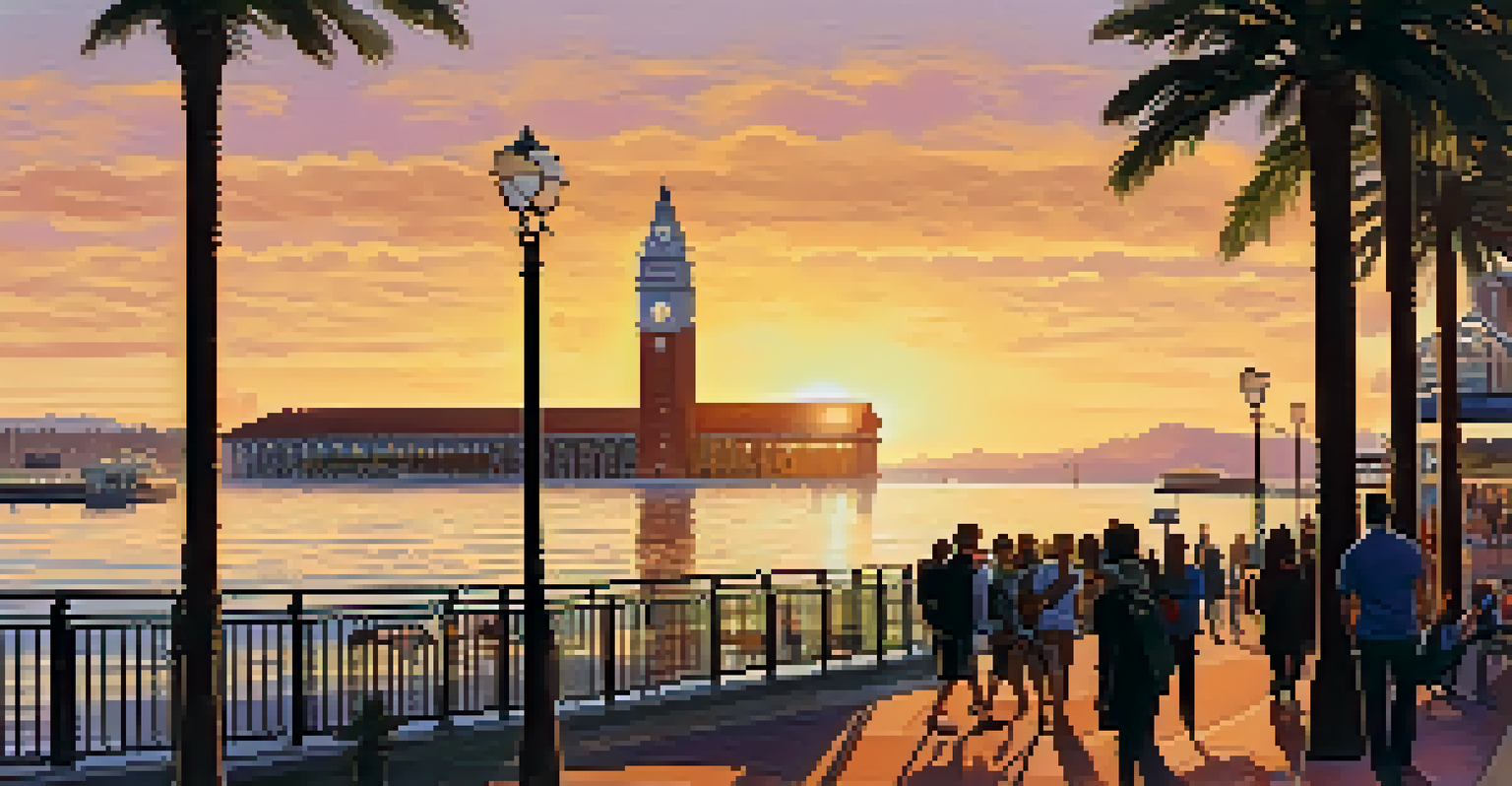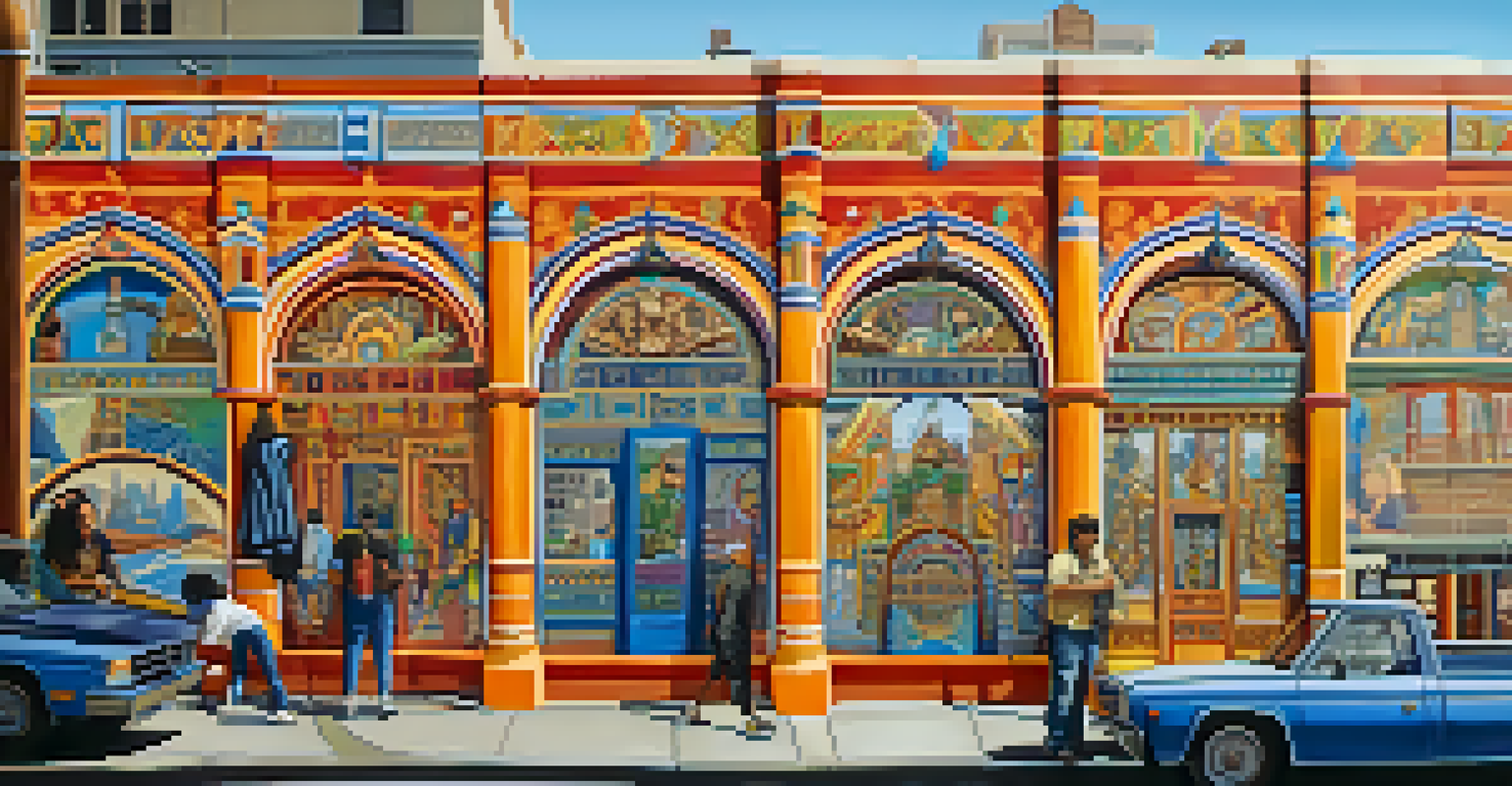Impact of Development on San Francisco's Historic Buildings

The Charm of San Francisco's Historic Buildings
San Francisco is renowned for its iconic historic buildings, from the Victorian houses of Alamo Square to the majestic Ferry Building. These structures are not just beautiful; they tell the stories of the city’s rich cultural heritage. They embody the architectural styles and social narratives that have shaped San Francisco over the decades, making them vital to the city's identity.
We can't be afraid of change, but we have to respect the past.
The unique character of these buildings attracts tourists and locals alike, contributing to the city's economy. Visitors often seek out these historic sites, eager to capture the essence of the city’s past. However, the charm that draws people in can also become a point of contention amidst modern development pressures.
As the city evolves, balancing the preservation of these historic structures with the need for new development becomes increasingly challenging. This situation raises important questions about how we value history in the context of urban growth.
The Role of Development in Urban Growth
San Francisco’s rapid growth has been fueled by its booming tech industry, leading to a surge in demand for housing and commercial spaces. This development often prioritizes modern architecture and functionality over preserving historical aesthetics. Consequently, the skyline is rapidly changing, and many historic buildings face the threat of demolition or alteration.

This push for development has sparked debates about preserving the city’s heritage versus accommodating the needs of a growing population. Advocates for development argue that modern buildings can meet current demands more efficiently, while preservationists emphasize the importance of maintaining the city's historic character.
Balancing Development and Preservation
San Francisco faces the challenge of balancing modern development needs with the preservation of its historic buildings.
The challenge lies in finding a balance that respects the past while embracing the future. A thoughtful approach to development can allow for both new growth and the preservation of historic sites.
Challenges of Preserving Historic Buildings
Preserving historic buildings in San Francisco presents numerous challenges, particularly financial constraints. Restoration and maintenance can be costly, making it difficult for property owners to justify the expense when faced with lucrative development opportunities. As a result, many historic buildings are at risk of being abandoned or neglected.
Preservation is a form of development, and development is a form of preservation.
Moreover, the bureaucratic process involved in designating a building as a historic site can be lengthy and complex. This often leaves owners frustrated, as they navigate regulations that may hinder their ability to develop their property as they wish. Consequently, some may choose to bypass preservation efforts altogether.
Despite these challenges, passionate advocates work tirelessly to protect these architectural treasures. Community organizations and preservationists often rally together to raise awareness about the importance of maintaining the city’s historic fabric.
Success Stories: Preservation Efforts in Action
Amidst the challenges, there have been notable success stories of historic preservation in San Francisco. The rehabilitation of the Ferry Building is a prime example, transforming it from a neglected structure into a vibrant marketplace while maintaining its historic charm. This project not only preserved a beloved landmark but also revitalized the surrounding area.
Another success is the restoration of the Mission District’s historic murals, which celebrate the cultural heritage of the community. These efforts demonstrate that it is possible to honor history while fostering a sense of place and identity in urban spaces.
Community Engagement is Crucial
Local residents play a vital role in advocating for the preservation of historic structures through community involvement and awareness.
These examples highlight how thoughtful preservation can contribute positively to the city's development narrative. They serve as inspiration for future projects that prioritize both growth and heritage.
Community Involvement in Preservation
Community involvement plays a crucial role in the preservation of historic buildings in San Francisco. Local residents often form advocacy groups to raise awareness about the importance of these structures and to fight against demolition. Their passion and commitment can influence policy decisions and mobilize public support for preservation initiatives.
Events such as neighborhood tours and educational workshops help foster a sense of pride in the city’s history, encouraging residents to become active participants in preservation efforts. By engaging with their surroundings, communities can ensure that their voices are heard in the planning process.
Ultimately, community advocacy can lead to more informed decision-making regarding urban development. When residents are involved, there is a greater chance that the unique character of San Francisco will be preserved for future generations.
Government Policies and Preservation Initiatives
Government policies play a significant role in shaping the landscape of historic preservation in San Francisco. The city has established regulations that protect designated historic landmarks, ensuring that any alterations or demolitions are subject to review. However, enforcement of these policies can be inconsistent, leading to concerns about their effectiveness.
In recent years, the city has launched various initiatives aimed at promoting preservation, including grants for restoration projects and incentives for property owners. These efforts not only help maintain the existing historic buildings but also encourage developers to consider preservation in their plans.
Government Policies Impact Preservation
Effective government policies and initiatives are essential for protecting historic landmarks while supporting sustainable urban development.
Through collaboration between government agencies, preservationists, and the community, there is potential for more robust strategies to safeguard historic sites. A comprehensive approach can lead to sustainable development that respects the city’s rich history.
The Future of Historic Buildings in San Francisco
As San Francisco continues to evolve, the future of its historic buildings remains uncertain. The ongoing tension between development and preservation will require innovative solutions and creative thinking. Embracing adaptive reuse—repurposing old buildings for new uses—can be a way to preserve history while meeting modern needs.
Additionally, fostering a culture of appreciation for historic architecture among residents and visitors can help create a stronger advocacy for preservation. By highlighting the stories behind these buildings, we can cultivate a deeper connection to San Francisco's past.

In conclusion, the future of San Francisco's historic buildings will depend on the collective efforts of the community, government, and developers. Through collaboration and commitment, it is possible to create a city that honors its history while embracing the possibilities of tomorrow.